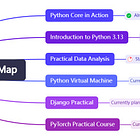How to Use AdaBoost to Improve Classifier Performance?(Practical Data Analysis 26)
Learn how AdaBoost improves classifier performance by combining weak classifiers into a strong one, enhancing accuracy with each training iteration.
Welcome to the "Practical Data Analysis" Series.
Today we are learning about the AdaBoost algorithm. In data mining, classification algorithms are considered core algorithms, and AdaBoost, like the random forest algorithm, is an ensemble algorithm within classification algorithms.
The meaning of "ensemble" is to gather ideas from multiple perspectives and leverage each one's strengths. When making decisions, we first listen to the opinions of several experts before making the final decision.
Ensemble algorithms typically come in two forms: voting (bagging) and re-learning (boosting).
The voting scenario is similar to gathering experts around a table. When making a decision, K experts (K models) classify the data independently, and the class that appears most frequently is selected as the final result.
Re-learning is equivalent to weighting and combining K experts (K classifiers) into a new super-expert (strong classifier) to make judgments.
So, as you can see, voting and re-learning are different.
Boosting means enhancement. Its purpose is to improve and enhance each iteration of training. In this process, the K "experts" are dependent on each other. When the K-th "expert" (K-th classifier) is introduced, it actually optimizes the first K-1 experts.
On the other hand, bagging, when voting, allows parallel computation, meaning the K "experts" make judgments independently without dependencies.





